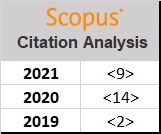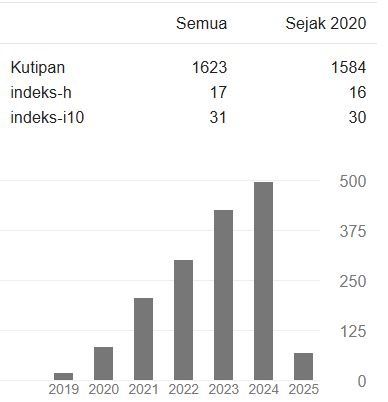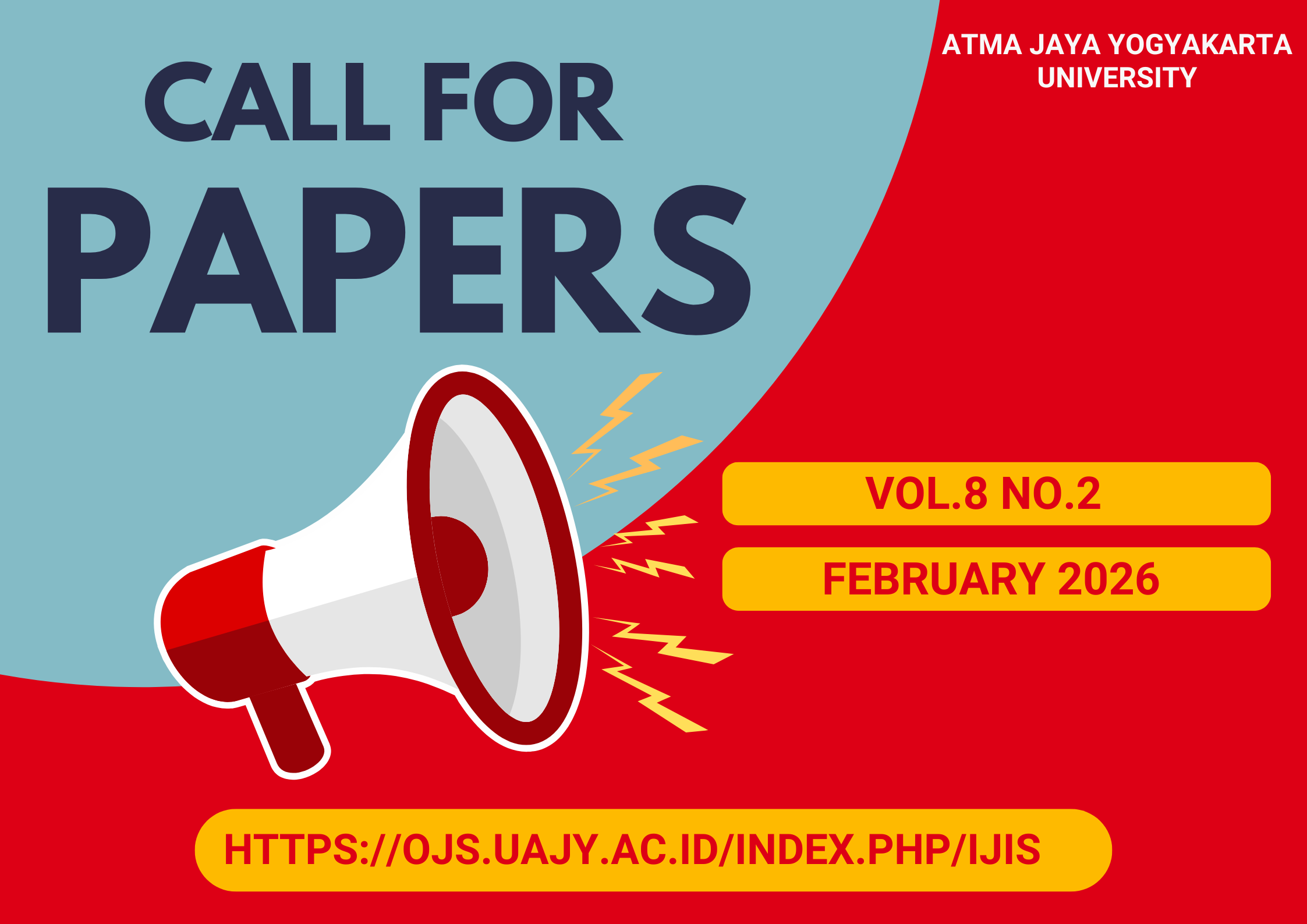Planning of Higher Education Information Technology Strategy Using TOGAF (A Case Study at AMN Cilacap)
DOI:
https://doi.org/10.24002/ijis.v2i1.2349Keywords:
EA, TOGAF, strategic planning, higher education, information systemsAbstract
Information technology that develops along with the rapid role of communication through the Internet makes technology and information systems have a position that is vital for the business alignment of an institution including higher education institutions. The strategic planning of this sector has a goal to develop the basis / guidelines in developing and developing information technology and systems to support organizational goals and increase increasingly competitive competitive advantage. Thus, the integration between business and information technology becomes important to support the competitiveness of institutions. The responsibility of Enterprise Architecture (EA) is to provide an accurate and fast information system based on the business demands of the institution. Appropriate standards and models are needed by higher education institutions to improve the alignment of business strategies and information technology. This study will explore the problems faced by AMN Cilacap and provide the development of information technology and systems needed to use EA using the Open Group Architecture Framework (TOGAF) methodology. TOGAF provides methods and tools to assist in the receipt, production, use and maintenance of corporate architecture.References
J. N. Luftman, P. R. Lewis, and S. H. Oldach, “Transforming the enterprise: The alignment of business and information technology strategies,” IBM Syst. J., vol. 32, no. 1, pp. 198–221, 2010.
Mardiana and K. Araki, “EA-MDA Model to Resolve is Characteristic Problems in Educational Institutions,” Int. J. Softw. Eng. Appl., vol. 4, no. 3, pp. 1–20, 2013.
R. A. Razak, Z. M. Dahalin, H. Ibrahim, N. I. Yusop, and M. K. Kasiran, “Investigation on the importance of enterprise architecture in addressing business issues,” 2011 Int. Conf. Res. Innov. Inf. Syst. ICRIIS’11, 2011.
B. D. Rouhani, M. N. ri Mahrin, F. Nikpay, and P. Nikfard, “A comparison enterprise architecture implementation methodologies,” Proc. - 2013 Int. Conf. Informatics Creat. Multimedia, ICICM 2013, pp. 1–6, 2013.
T. Clark, B. S. Barn, and S. Oussena, “A method for enterprise architecture alignment,” Lect. Notes Bus. Inf. Process., vol. 120 LNBIP, pp. 48–76, 2012.
F. R. Morris, J. E. Timmerman, and A. S. Lovvorn, “Seacoast University: the IT factor in moving online,” CASE J., vol. 10, no. 1, pp. 3–11, 2014.
M. Plechawska-Wójcik and M. Borys, “the Comprehensive Approach To Students It Research Projects Developing,” INTED2016 Proc., vol. 1, no. March, pp. 835–843, 2016.
J. Lapalme, A. Gerber, A. Van Der Merwe, J. Zachman, M. De Vries, and K. Hinkelmann, “Exploring the future of enterprise architecture: A Zachman perspective,” Comput. Ind., vol. 79, pp. 103–113, 2016.
C. T. Jensen, O. Cline, and M. Owen, “Combining Business Process Management and Enterprise Architecture for Better Business Outcomes,” Ibm.Com/Redbooks, no. Marts, p. 189, 2011.
S. Buckl, A. M. Ernst, F. Matthes, R. Ramacher, and C. M. Schweda, “Using enterprise architecture management patterns to complement TOGAF,” Proc. - 13th IEEE Int. Enterp. Distrib. Object Comput. Conf. EDOC 2009, pp. 34–41, 2009.
ISO, IEC, and IEEE, “International Standard ISO/IEC/IEEE 42010:2011 Systems and software engineering — Architecture Description,” Iso/Iec/Ieee, vol. 2011, pp. 1–94, 2011.
R. Harrison, “Study Guide: TOGAF 9 Foundation, 2nd Edition,” p. 203, 2011.
A. Gerber, P. Kotz, and A. Van Der Merwe, “Towards the Formalisation of the Togaf Content Metamodel Using Ontologies,” pp. 54–64, 2011.
Zachman, “EA: The Issue of the Century,” 1996.
S. Bondar, J. C. Hsu, A. Pfouga, and J. Stjepandić, “Agile digital transformation of System-of-Systems architecture models using Zachman framework,” J. Ind. Inf. Integr., vol. 7, pp. 33–43, 2017.
N. B. Kurniawan and Suhardi, “Enterprise architecture design for ensuring strategic business IT alignment (integrating SAMM with TOGAF 9.1),” Proc. 2013 Jt. Int. Conf. Rural Inf. Commun. Technol. Electr. Technol. rICT ICEV-T 2013, 2013.
T. O. Group and A. R. Reserved, Personal PDF Edition TOGAF Version 9. 2009.
C. Z.a, C. C.a, K. A.S.a, and M. V.b, “Smart Hospital Management System: An integration of enterprise level solutions utilising open group architecture framework (TOGAF),” Proc. - 2010 3rd IEEE Int. Conf. Comput. Sci. Inf. Technol. ICCSIT 2010, vol. 5, pp. 8–15, 2010.
J. Mejia, M. Muñoz, Á. Rocha, and J. Calvo-Manzano, “Trends and applications in software engineering: Proceedings of the 4th International conference on software process improvement CIMPS’2015,” Adv. Intell. Syst. Comput., vol. 405, pp. 111–121, 2016.
I. H. A. Wahab and A. Arief, “An integrative framework of COBIT and TOGAF for designing IT governance in local government,” ICITACEE 2015 - 2nd Int. Conf. Inf. Technol. Comput. Electr. Eng. Green Technol. Strength. Inf. Technol. Electr. Comput. Eng. Implementation, Proc., pp. 36–40, 2016.
D. P. S. Aithal, “Study on ABCD Analysis Technique for Business Models, business strategies, Operating Concepts & Business Systems Dr. P. S. Aithal,” Int. J. Manag. Soc. Sci., vol. 04, no. 01, 2016.
Downloads
Published
How to Cite
Issue
Section
License
Indonesian Journal of Information Systems as journal publisher holds copyright of papers published in this journal. Authors transfer the copyright of their journal by filling Copyright Transfer Form and send it to Indonesian Journal of Information Systems.

Indonesian Journal of Information Systems is licensed under a Creative Commons Attribution-NonCommercial 4.0 International License.

















